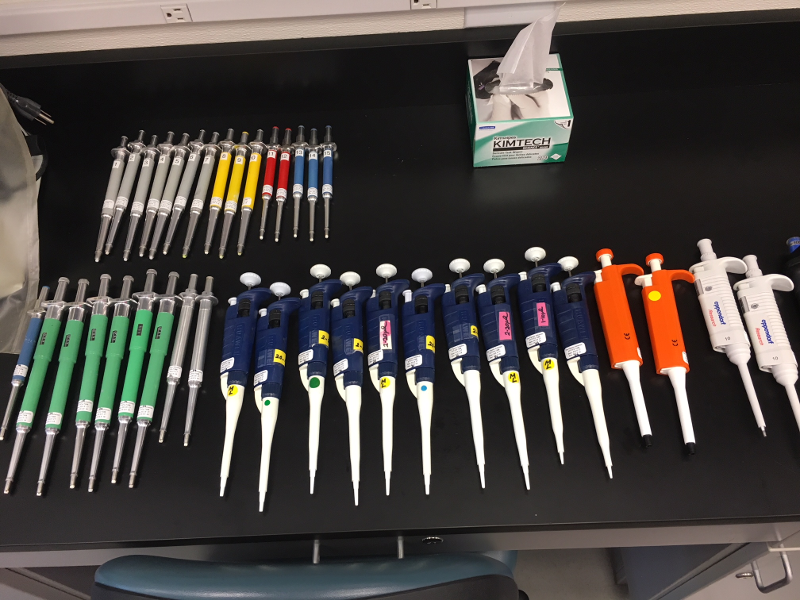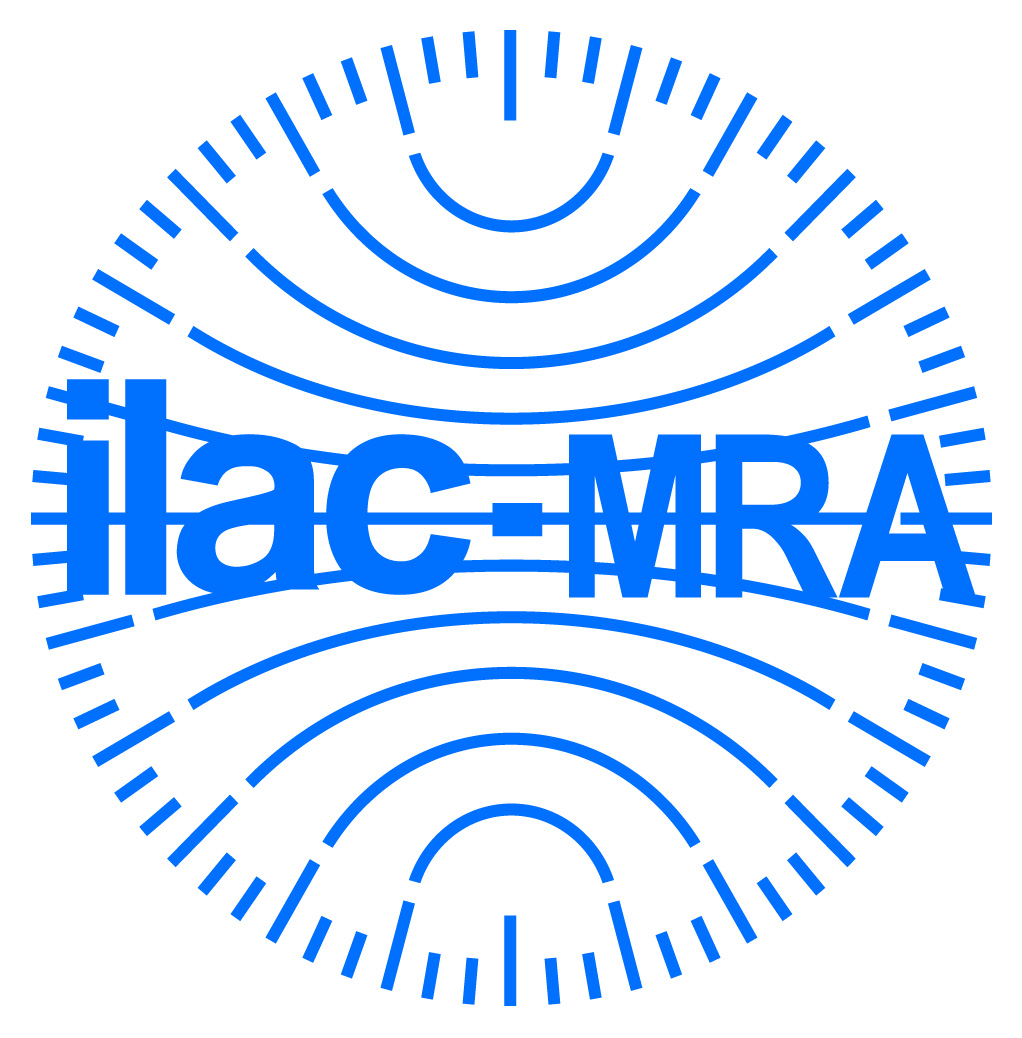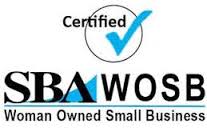Frequently Asked Questions
Similar to cars, pipettes need a tune-up every so often to ensure that they are accurate and working properly. Pipettes have parts that wear out over time, so if maintenance is not performed regularly the parts could jeopardize the precision of the instrument. Those who tend to wait until problems arise, often end up paying more for new pistons and shafts. Without regular preventive maintenance, most pipettes are subject to corrosion prior to going out of specifications, even though it may not be physically apparent.
Preventive maintenance involves inspection, disassembly and thorough cleaning of each pipette. The seal and o-ring are changed and the piston is lubricated if necessary. After recalibration the pipettes are like new. In order to maintain precision and accuracy in your measurements, a proper calibration and maintenance procedure should be performed on a regular basis. Manufacturers recommend pipettes should be calibrated on an annual basis. You may require more frequent servicing of your pipettes. We suggest you refer to your laboratories' Standard Operating Procedure (SOP) and have them calibrated to align with your needs.
These are The Pipette Solutions' opinions on most major brands. As you can see, we like a lot of different brands and we can help connect you with your local representatives.
Denville Pipettes – Denville pipettes are autoclavable pipettes that have reduced plunger force due to a seal and greased plastic piston. Denville pipettes are very reliable and a great purchase for undergraduate students. They function much like a Gilson, but you can usually buy them for less. Their replacement parts costs are high, but we can order most parts for repair. Denville also offers multi-channel pipettes.
Eppendorf Pipettes – If you have a lot of undergraduates in your lab using your pipettes, whether you are a teaching lab or a research lab, Eppendorf pipettes are a great choice. Eppendorfs come in single channel, multi-channel, fixed and adjustable volumes. They have autoclavable lower parts and they have a two-stop operation. They come with an excellent 3 year warranty. Eppendorfs are composed of a plastic piston with a spring; Therefore, there is less room for corrosion due to the plastic piston. Eppendorf References are also great pipettes, but the tip ejection can take place when you push on the second stop. Sometimes this causes problems with the new students handling the pipettes and it makes for a frustrating day of pipetting. Eppendorf makes an expensive, but reliable multi-channel pipette. They seem to be an industry leader in electronic and multi-channel pipettes.
Gilson Pipettes - You cannot go wrong with the name Gilson. Gilson manufactures strong, reliable pipettes that can live as long as you would like them to. In our years of experience, we have never seen a Gilson that is beyond repair. We carry every part of a Gilson pipette in our inventory. Gilson has come out with many new styles over the years. We recommend the Neo series, L-series or the Classic series. Gilson also has reliable multi-channels. Gilsons' newest series is the L-series which has extremely low pipetting forces and is extremely lightweight. The only downside to Gilson pipettes are the metal pistons. They easily corrode. Make sure you keep up with your annual preventive maintenance on these pipettes. Gilson also offers electronic pipettes and multi-channels.
MLA Pipettes – These are very precise and are mostly used in hospitals. They come in fixed and variable volumes. They do require special tips, but they are an accurate solution for your laboratory. MLA does not offer multi-channel pipettes, but they recommend using Ovation pipettes for your multi-channel needs.
VWR Pipettes – VWR Pipettes are some of our favorites! They are extremely comfortable pipettes, so you can get the same consistent results even after hours of pipetting. They have superior accuracy and precision. They have a plastic piston with seals and grease, which is why they have reduced plunger forces. They have a volume locking mechanism and they can be turned by the plunger button or the dial. These are consistent pipettes and we highly recommend them. The replacement parts are a little more expensive than others but, because of their reliability, parts are rarely needed. VWR also offers multi-channel pipettes.
Did you know that you can trade-in your old or broken pipette towards a new one? Most manufacturers offer this program, which is great for everyone. There is no reason to have pipettes that are not fully functional and we feel that we do a fair job of telling our customers whether or not they should spend the money calibrating, repairing or if they should trade towards a new pipette. Eppendorf and Gilson are the trade-in programs that we refer. They accept any brand of pipette, working or not, as a trade towards a brand new pipette. We can help by performing the trade-in for you or you can download these forms and perform the trade-in on your own.
According to Manufactures' Specifications your pipettes should be cleaned and calibrated on an annual basis. However, based on their usage and your laboratories Standard Operating Procedure (SOP), they could be required to receive service every 3 or 6 months to ensure accuracy. Pipettes should be serviced at least once a year to make sure that they are accurate and receiving the preventive maintenance that they need in order to function properly.
There may be a few different problems with your pipette if it is leaking or dripping.
- Your pipette could be dripping or leaking because there is corrosion in your pipette. This means that your seal is no longer working correctly, therefore you need internal cleaning and maintenance of your pipette.
- Your pipette might need proper lubrication.
- Sometimes dripping or leaking is also caused by a shaft issue. The Pipette Solution can identify this problem and replace the shaft for you.
- The tips you are using may not be the right fit for your pipette. The Pipette Solution can help you identify this issue and help connect you with your pipette tip representative.
- Your pipette might need an o-ring replacement or spring replacement due to wear and tear. The Pipette Solution can replace what is necessary, on site.
Yes, pipette tips do make a difference when using your pipettes. If the tips do not fit the pipette correctly, there will be leaking or incorrect volumes drawn up while pipetting. The Pipette Solution can help you identify these issues and help you make changes with your pipette tip representative.
It is important to handle your pipettes properly to maximize their longevity and maintain accurate readings. The Pipette Solution has created ten tips to properly handle your pipettes.
- Always store your pipettes upright. Leaving them flat on the bench can cause corrosion.
- Leave your pipette at its maximum volume. This will create less pressure on the spring and keep your pipette functioning properly.
- Never lay the pipette on its side when liquid is in the tip. This situation could cause the liquid to enter the shaft and piston area of the pipette, which will result in piston and shaft corrosion.
- When using a pipette, pre-wet the tip to avoid cross-contamination. Then push the plunger down to the first stop and hold, insert the tip into the liquid at a vertical position. Slowly release the plunger so the liquid goes into the tip without any signs of bubbles. Keep your movement consistent for the most accurate results. When dispensing the liquid, place the pipette tip at an angle between 10 and 45 degrees against the inside wall of the receiving vessel.
- Always abide by the volume usage specified by the manufacturer. Do not try to use a 200ul-1,000ul pipette to draw up 50ul of liquid.
- Teach new laboratory members how to use the pipettes; do not assume that they know proper technique.
- Do not open the pipettes, they lose calibration when opened.
- When removing the tip from the pipette, use the ejector button or carefully pull the tip off of the pipette shaft with your hand.
- Draw up liquid every so often and keep it in your tip at vertical. Count to 10 and make sure that your pipette is not leaking. If the pipette leaks, call The Pipette Solution to fix your problem.
- Calibrate your pipettes at least annually to ensure they are within recommended specifications, cleaned thoroughly and working properly.
You can refer a lab by calling 1-877-9PIPETTE or emailing us at refer@ThePipetteSolution.com. Please provide us with the name of the contact, phone number, email and location of the lab you are referring and your contact information.
- Checking pipettes is more of a physical inspection. This is the process in which volume is drawn up several times and the volume is measured to ensure accuracy of the pipette. The pipette is not opened and no maintenance is performed. This means your pipette is accurate today, but without the proper preventive maintenance it is hard to say how long it will remain so. The Pipette Solution strongly discourages a laboratory from using this method, as we would not have gone into the pipette, so we cannot verify its condition.
- Calibrating is when the pipettes are checked initially and then calibrated to provide the correct volume.
- Providing preventive maintenance is when the pipettes are checked to see if they are accurate and then opened and cleaned internally. Lubricating and seal changing occurs and then the pipette is calibrated to manufacturers' specifications.
- Every one of The Pipette Solution's services includes an initial internal/external inspection, a gravimetrical check of the pipette, preventive maintenance and a full linear calibration.




